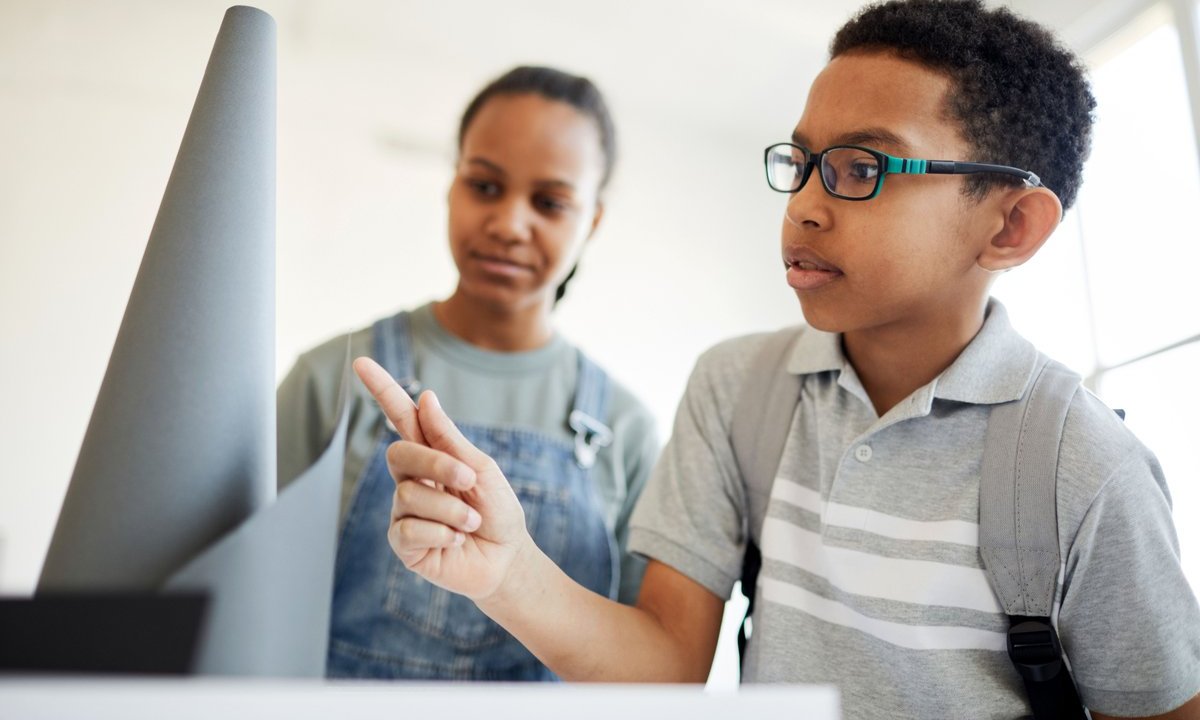
Last week I spent an inspiring afternoon in a Zoom workshop dedicated to envisioning “liberatory futures” for P-12 education. How can we collectively create an educational future that is rooted in equity, self-determination, and the right of a learner to help shape the world? How can our educational system(s) expand our definition of “school,” and provide many ways for learners to thrive, grow, and succeed? That workshop was led by staff of KnowledgeWorks—CFM’s counterpart in the education sector—who are dedicated to “sparking new thinking about how to prepare students for an uncertain future.” The Alliance has worked with KnowledgeWorks before—notably as a partner in preparing our seminal report Building the Future of Education: Museums and the Learning Ecosystem. Today on the blog, Katherine Prince, Vice President, Strategic Foresight at KnowledgeWorks, introduces their latest forecast on the future of learning and explores the roles museums might play in a liberatory future.
–Elizabeth Merritt, VP Strategic Foresight and Founding Director, Center for the Future of Museums, American Alliance of Museums
The Center for the Future of Museums’ TrendsWatch: Museums as Community Infrastructure makes a compelling case that museums are important forms of social infrastructure and community platforms that are “essential contributors to their constituents’ health, education, and safety.” During the height of the COVID-19 pandemic, many museums responded by making online educational resources available, providing digital access to their collections—and by supporting emergency response efforts through food and access to the internet. Others made educational kits available for use at home. As they worked to innovate in face of unprecedented circumstances, museum education departments faced tremendous stress due to changes in their work and widespread layoffs.
Even though it can be hard to consider innovating more when people feel strained and dollars scarce, museums have begun to shift their understanding of what services they might provide long term and how they might do so. The examples above illustrate just some of the ways museums reconfigured their support for learning and community well-being over the past three years. The current edition of TrendsWatch also highlights opportunities for museums to play a larger role in educating children by supplementing, or providing alternatives to, public education systems that are structurally inequitable and which struggle to sustain shifts to the status quo.
KnowledgeWorks’ latest forecast on the future of learning, Imagining Liberatory Education Futures, similarly explores possibilities for creating anti-oppressive, liberatory education systems that would get past the “structural predetermination of outcomes [that] is built into current education systems.” Put simply, a liberatory education system would support each person in developing to their fullest and thriving in ways that mattered to them.
This is a much taller and more fundamental order than simply working to make current education systems more equitable or providing engaging learning experiences for learners who pursue alternative pathways. It is also long-term, with a time horizon of at least twenty years. Two critical uncertainties affect whether and how we might shift toward liberatory education:
- The level of social cohesion – The extent to which people will recognize one another’s humanity, foster interconnection and respect, and be willing to work across differences for mutual well-being.
- The responsiveness of public institutions – The extent to which various types of public institutions will recognize the needs and demands of their constituents and share power in creating solutions.
These critical uncertainties could have big repercussions for the future of education and other aspects of society. As museums consider how they might prioritize community impact and help transform education systems (which TrendsWatch recommends), these uncertainties can suggest opportunities for supporting each learner. In turn, these opportunities can help museums push the boundaries of important, current offerings such as curricular resources and museum schools or rise to the challenge of future limitations. Indeed, museums can lead in understanding community members’ needs and co-creating ways forward.
The specific opportunities for museums to shape the future of learning and their communities will vary depending on what form(s) liberatory education takes in the future. Could liberatory education:
- Thrive in cohesive, community-based commons that work around unresponsive public education systems?
- Find a place in hyper-local shadow systems that center liberation in learning experiences?
- Be left up to interested individuals if public education systems became laser-focused on economic development?
- Form the foundation of care-based learning ecosystems that serve as vital social infrastructure?
Museums’ longstanding leadership of lifelong, life-wide learning positions them to serve individuals and communities in any of these scenarios. But museums can also help shift educational and community systems toward deeper change. Promoting social cohesion promises to help museums and other education stakeholders develop strategies to build liberatory structures and systems and dismantle oppressive ones.
Building learning networks that connect diverse educational nodes, as the latest TrendsWatch suggests, seems like a promising strategy. Most of the scenarios for liberatory education mentioned above rely on webs of connection in some form—it is a question of how those networks relate to public education systems, how many people participate in them, and in what ways.
In addition, museums can help share and amplify the stories and perspectives of historically marginalized yet resilient populations, thereby challenging traditional narratives about race, education, and opportunity that have held inordinate sway over how public education systems and other learning experiences are designed and what success looks like within them. Some museums already, of course, focus on such experiences (for example, the National Museum of African American History & Culture, National Museum of the American Indian, and National Underground Railroad Freedom Center). Other museums that have not traditionally focused on such experiences have been extending their purview to elevate issues related to social justice (for example, the Columbus Museum of Art’s Center for Justice and Social Engagement and the many exhibits related to social justice in 2021).
As they continue to examine their missions and values and to explore their roles in their communities, museums can help engage people in vivid ways around the question of what it would be like for education to support each person in developing to their fullest and thriving in ways that mattered to them—and what that might mean for society. Indeed, resources exist to help museums reconsider their values and practices toward being more relevant to their communities.
Each museum’s local context will suggest specific strategies that could promote the qualities of liberatory education today while contributing to longer-term systems transformation. Working with others to generate a shared vision of liberatory education and museums’ roles in it and to co-create the strategies to move toward it, together, represents an important first step. Such future-forward planning can help guide innovation even within constraints, making sure that it is deliberate in increasing community impact and in helping to make education anti-oppressive.
You can follow Katherine, her colleagues and their work on liberatory education at
@katprince @knowledgeworks #FutureEd #LiberatoryEducation








